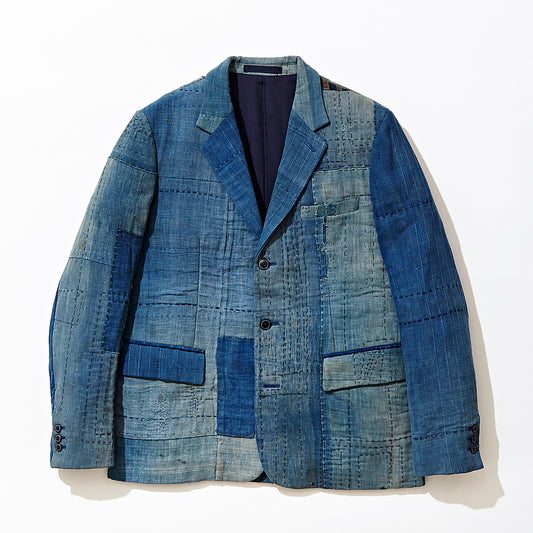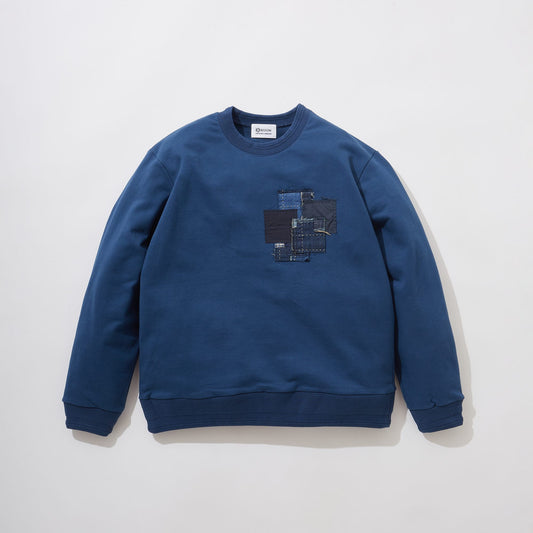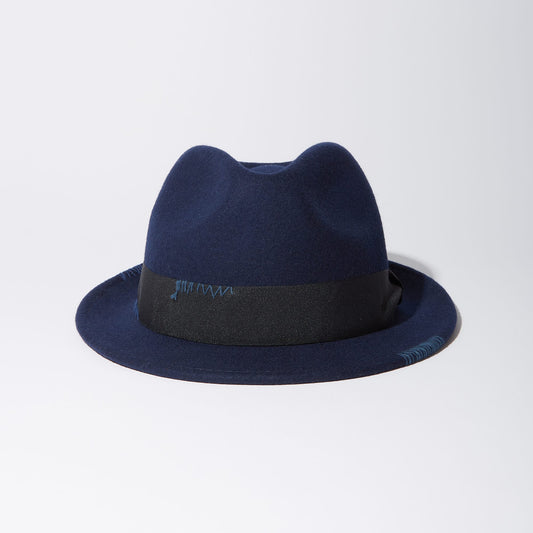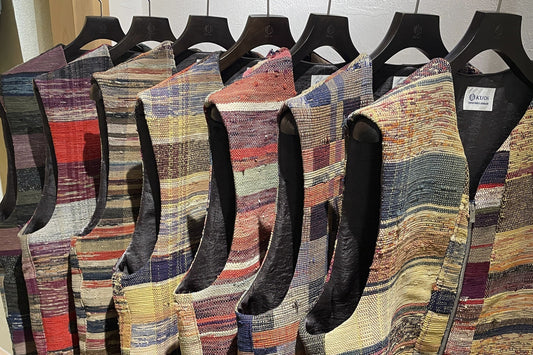
Something in common between traditions of Ireland and Japan
Share
Hi it's Shohei.
There is an item that has a strong presence in the store.
"I came to see this" "It's amazing to see it in person"
"I saw it on Instagram and was curious about it"
"Can I just take a look at this one before leaving?"
The sweater draws our customers attentions.
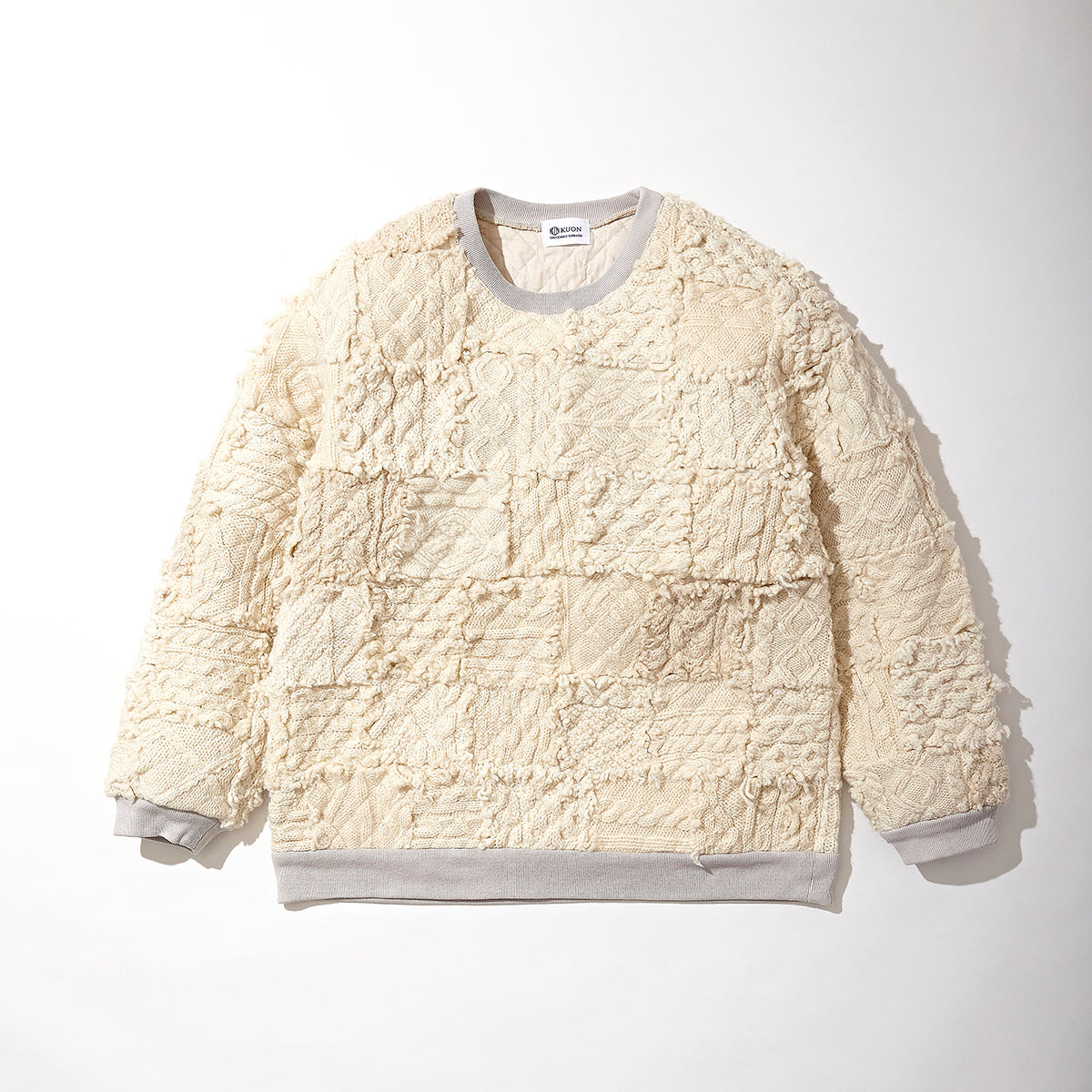
From a distance, the sweater is just a sweater with a relaxed shape, but when you look closely, you can see a patchwork of knitwear with various patterns.
The knitwear used for this patchwork is vintage Irish fisherman's sweaters that have been soiled or have holes in them that they can no longer be worn.
As you can guess, it takes a lot of time and effort to revive them. I would like to introduce the production process.
Fisherman Sweater

The fisherman's sweater was born in the Aran Islands, Ireland. It is also called Aran sweater, which should sound familiar to you.
The Aran Islands in Ireland are surrounded by the Atlantic Ocean and are exposed to strong winds from the sea. This environment was very harsh for the fishermen. The environment is similar to Tohoku, Japan where BORO and SAKIORI were born.
The fisherman's sweater was born under such harsh conditions. The wool used for the sweaters came from sheep raised in this environment, and because the wool contained natural oils, it was water resistant and very warm, and was loved by the islanders in this harsh environment.
The fisherman's sweater was born over a thousand years ago and was knitted by the women of the Aran Islands so that their fathers, husbands and sons would not be cold when they went fishing.
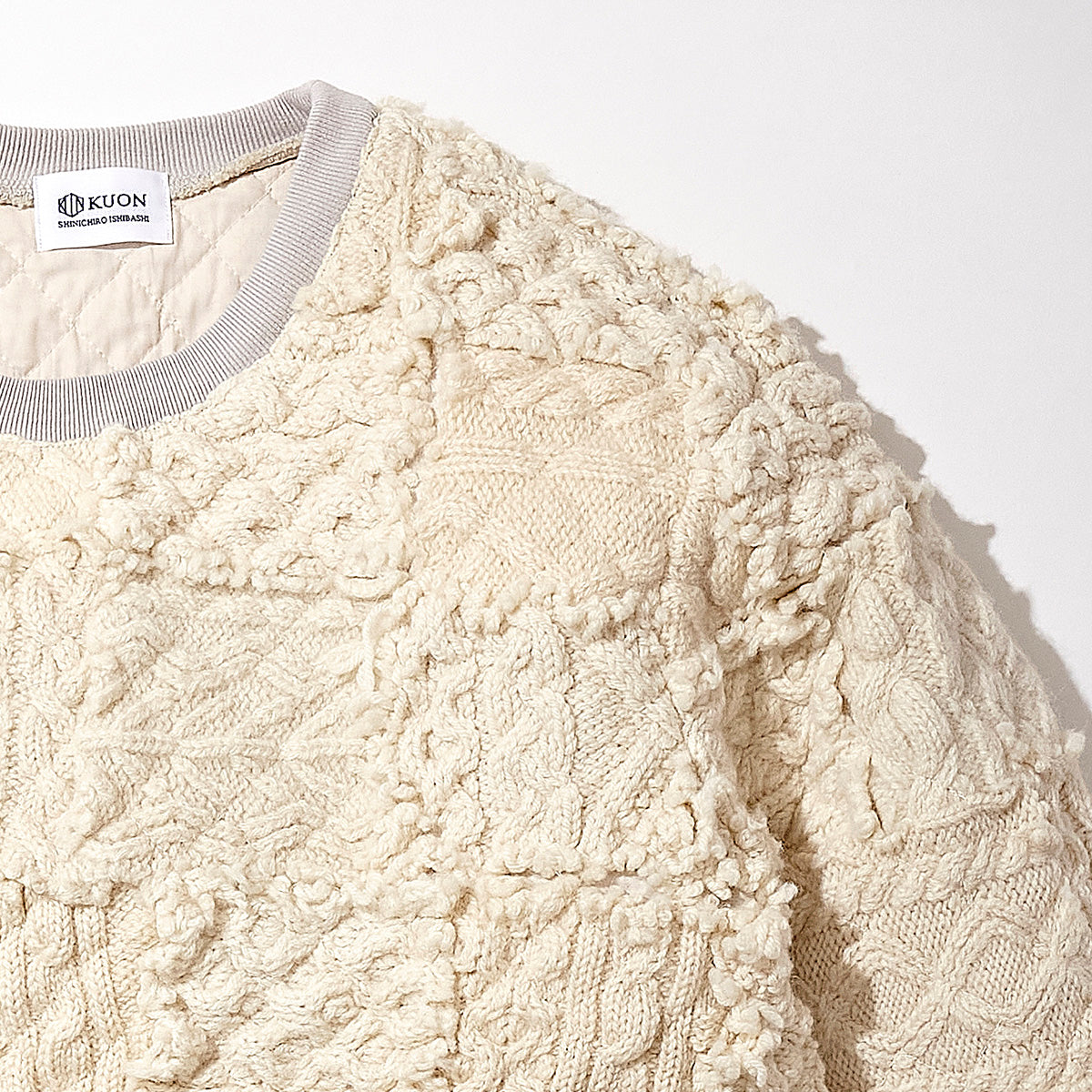
Each of these various knitting patterns has its own meaning.
Cable, diamond, honeycomb, and so on... Longevity and health. Prosperity of descendants. Wealth. In those days, each family had a different pattern, and the meaning of each pattern was similar to that of a family crest in Japan.
"Should be interesting"

I was curious about one thing, so I asked the designer, Mr. Ishibashi, while writing this article.
"Why did you make this sweater? It's really hard to make..."
His reply was "That's why. It must be interesting."
Yes, that is the way...
The product is born from the sparing time and effort as well as other KUON products, and are available in the store.
The production process
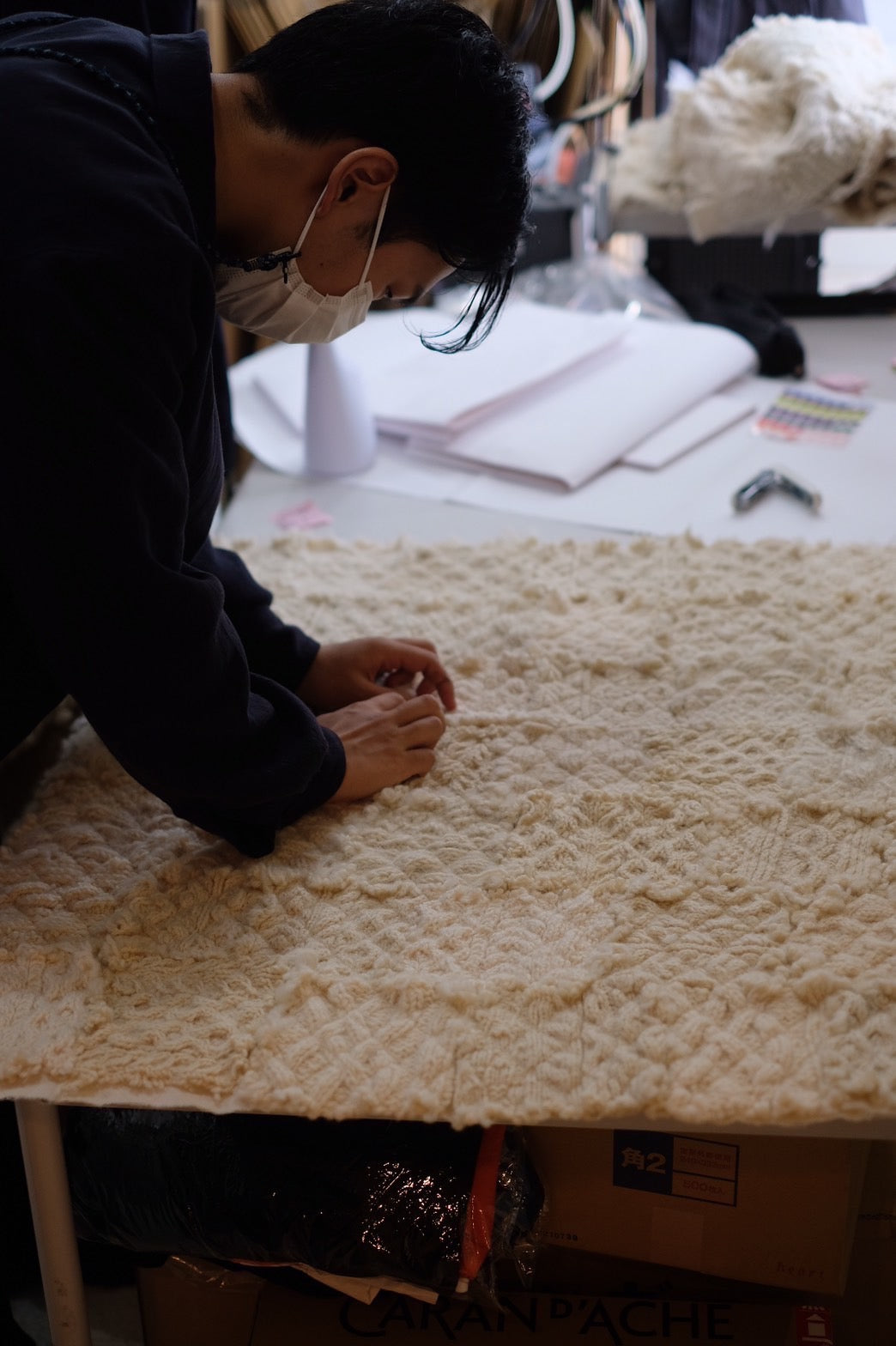
As I mentioned in the beginning, it is made from vintage Irish sweaters that have been stained or torn and can no longer be worn. Fishermen in that time would have dyed or repaired them and continued to wear them, but KUON used a different method to bring them back to life in the modern time.
The first step was to cut the sweaters, which had been gathered in three large cartons, into 10cm x 10cm squares. Yes, it started with a tough work...
I was allowed to do the cutting. At first, I enjoyed cutting the knitwear because it was something I don't usually experience. After a while, I found it was quite hard work because the sweaters were thick and heavy.

The next step is to lay out the knitted fabric on the cotton lining. After this process, you can see a feel of the fabric.

The last operation done in the KUON atelier is washing. As the wool absorbs the water, it shrinks, making the knit tighter and denser.
After that, the sewing and finishing process is done at a factory.
Relaxed but clean shape
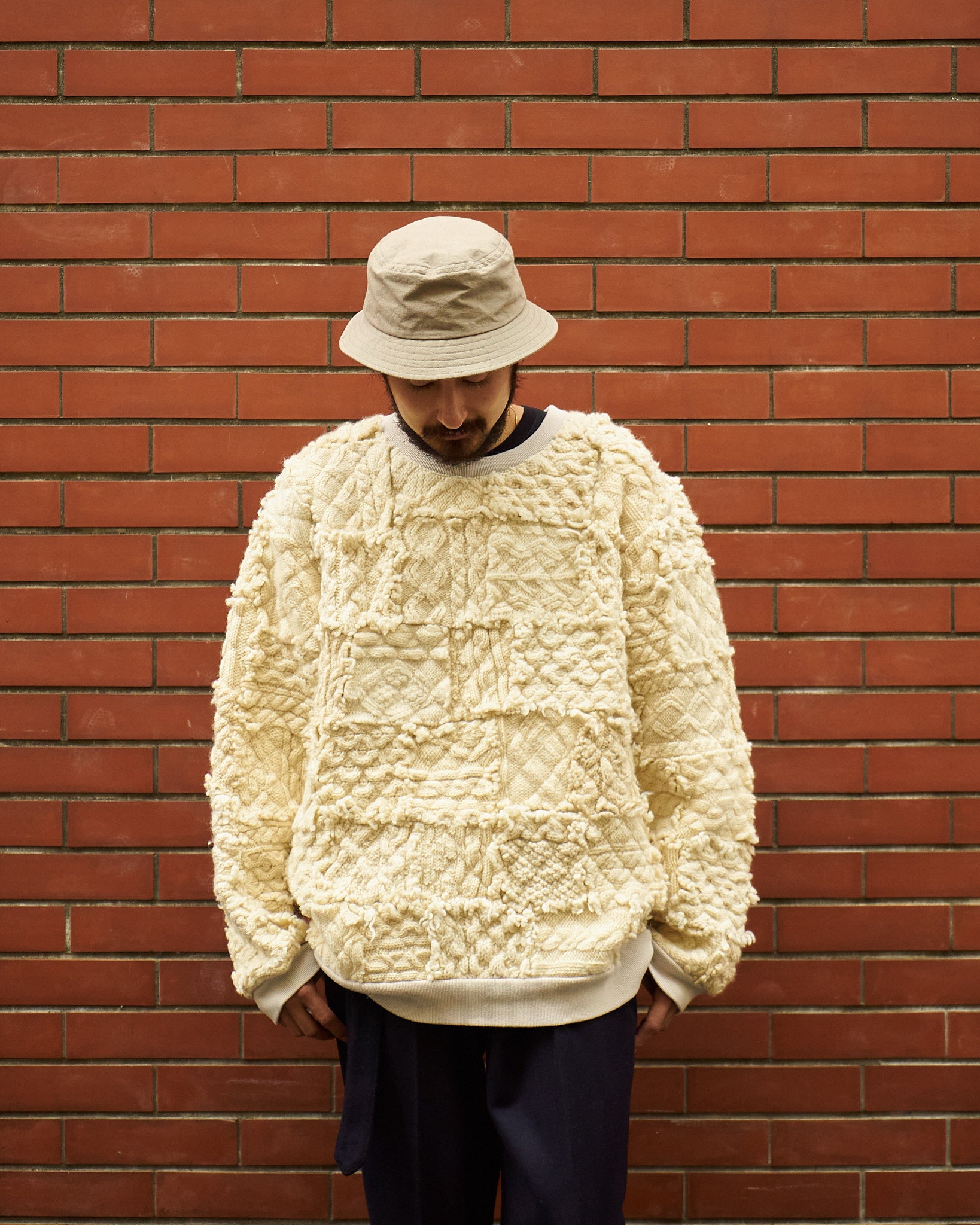
By setting the length shorter, it achieves a relaxed fit that is not too casual. The collar, sleeves, and hem are made with circular rib fabrics to give a different impression from ordinary sweaters, and they emphasize the presence of the patchwork. The cotton lining used for the base of the patchwork also plays a role in the comfort of the garment.
Incidentally, the sweater is made from three or four used sweaters to make one of these sweaters, so it is very warm and heavy. Due to the weight and the lined cotton fabric that doesn't stretch, we recommend you to wear it as an outerwear.
There is only one left in our store, so be sure to check it out before it's gone. For whom cannot come to the store, detailed photos are available at the product's page.
Thank you very much for your time.

